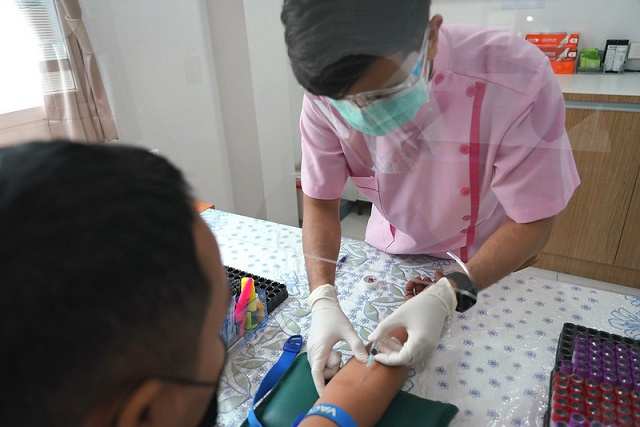
Seychelles intends to develop a new national strategic plan for HIV and other sexually transmitted diseases. (USAID/Flickr) Photo License: CC BY-NC 2.0
photo license
No. 19 Indian Ocean HIV/AIDS SymposiumHepatitis and Addiction opens in Seychelles on Monday with the theme “HIV at the heart of comprehensive, accessible care”.
About 200 representatives from Seychelles, Mauritius, Madagascar, Reunion and Comoros participated in the three-day event and gave speeches on the AIDS problem in their respective countries starting on the first day.
The workshop has not been held for four consecutive years due to the coronavirus pandemic, but it serves as an important platform for various sectors involved in all aspects of HIV-related work to discuss issues, exchange ideas, share best practice and learn about the latest prevention, A caring and supportive approach.
Seychelles Health Minister Peggy Vidotte said in her opening speech that the Seychelles has made some progress since the COVID-19 pandemic but is still moving forward but is still not fully achieve the goals set by the United Nations.
She said that in the future Seychelles plans to formulate new national strategic plan About HIV and other sexually transmitted diseases.
Vidot added: “The new plan will be implemented from 2024 to 2028 and will be consistent with the 2021 Political Declaration. The World Health Organization has pledged to support the development of the new plan from 2024 in line with the goal of achieving zero emissions by 2030. Global Plan.”
One measure of progress made by countries in the Indian Ocean region is UNAIDS goals By 2030, the population will be 95-95-95.
 |
| The seminar officially opened on Monday. (Country of Seychelles) Photo License: CC-BY |
This target means that by 2020, 95% of people living with HIV will know their HIV status, 95% of people living with HIV will receive continuous antiretroviral treatment, and 95% of people receiving antiretroviral therapy will Those treated will receive ongoing antiretroviral treatment. Viral suppression.
Seychelles President Wavell Ramkalavan, who officially opened the workshop, said the event “provides an opportunity to share our collective and individual progress and challenges and discuss the way forward to achieve the 2030 goals”.
“The need to cooperate and pool our efforts in the Indian Ocean region has become evident at situational level, underscoring the importance of cohesion in building our common assets. Learning from past experiences, sharing good practice and avoiding repetition of mistakes are at the core of our A collective approach,” he added.
Ramkalavan also called on partners to continue advocating for Seychelles’ inclusion in the World AIDS Fund.
Anne Mutjhoni Githuku-Shongwe, director of UNAIDS for East and South Africa, said the Indian Ocean region was facing a shocking reality, which was underlined by UNAIDS estimates.
“The rise in HIV incidence and prevalence is alarming. This situation requires a targeted response based on specific data for each community and region, regardless of country of origin. Indeed, the globalization of our world Collective action is called for to address this complex challenge of HIV,” she added.
The HIV virus was first discovered in Seychelles in 1987. Since then, 1,398 cases have been detected, including 907 males and 491 females.
According to the Annual Health Sector Performance Report 2022 and the Global AIDS Monitoring Report, 988 people are known to be living with HIV in Seychelles, of whom 630 are men and 327 are women. 893 people, or 90%, are receiving treatment, meaning Seychelles has achieved one of the UNAIDS 90-90-90 targets in 2022.
The Communicable Disease Control Unit (CDCU) reported 72 new HIV cases, 64% of which were men and 36% of which were women, including one case of mother-to-child transmission of HIV. In 2022, 27 people living with HIV died, well above the pre-pandemic average.
After three days, participants will present their recommendations for work in the coming year.

